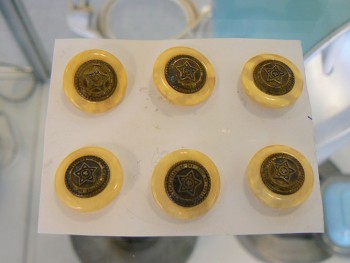More on plastics

The history of plastics is closely linked to that of the second industrial revolution, the period from about 1850 to 1914, in which new technologies soared and mass production became a reality. Electricity, the radio, the internal combustion engine, new materials: one discovery quickly followed the other. The search for new materials and raw materials was also motivated by a population explosion starting around 1850. Natural raw materials like ivory and latex became scarce.
The first plastics
Polymers, chains of identical or similar molecules, are everywhere in nature. Natural rubber, cellulose from wood, straw or cotton, resin, human or animal proteins and blood: they consist of natural polymers. These natural substances also stood at the base of the first plastics that were developed in the 19th century. For example, the milk protein casein was the raw material for artificial horn, cotton cellulose acted as a raw material for celluloid and natural rubber was used to make ebonite (vulcanized rubber). These early plastics are called semi-synthetics and are, in fact, modified natural products.
Synthetic plastics

Bakelite, phenol formaldehyde or phenol resin, was the first so-called synthetic polymer. The Belgian Leo Baekeland experimented with mixtures of phenol (an aromatic alcohol) and formaldehyde, and in 1909 produced the first synthetic plastic, which he branded Bakelite. Phenolic resin was followed quickly by the discovery of urea formaldehyde, polymethylmeth-acrylate (perspex, plexiglas) and melamine formaldehyde.
In the decades after 1930 more and more modern, sophisticated plastics came to the market, such as polystyrene, polyurethane, polyvinyl chloride, polyamide and poly propylene. By 1960 the older plastics were effectively gone. Oil and gas are still the main raw materials for current plastics, although, since 1990, more and more biodegradable plastics are developed from starch and other materials.
Thermoplastics, thermosets
In addition to their distribution in semi-synthetic and synthetic, plastics can also be classified according to characteristics such as in thermoplastics, thermosets and elastomers.
Thermoplastics consist of unbranched or slightly branched chains that melt upon heating and can thus be reshaped. The semi synthetic plastic celluloid was the first thermoplast.
Thermosets have a net structure with many cross-links in the chains, are tough and temperature resistant. Galalith (casein formaldehyde) was the first semi-synthetic thermoset; bakelite, the first completely synthetic thermoset.
Elastomers have a few cross-links, and are resilient and stretchable. Natural and synthetic rubber are well-known examples.
